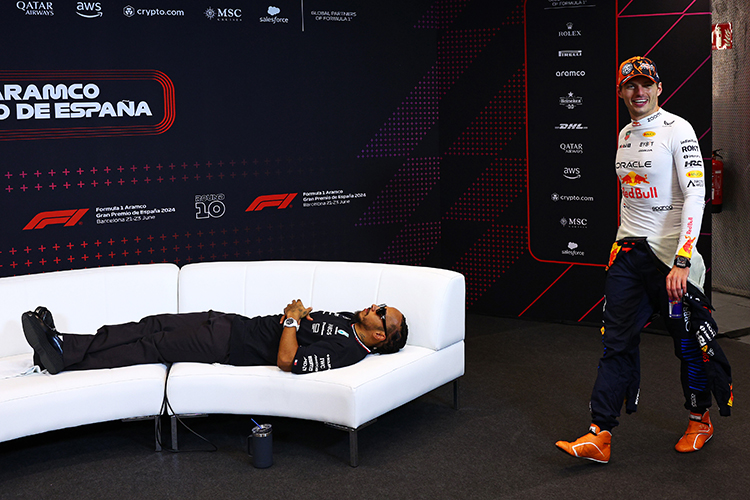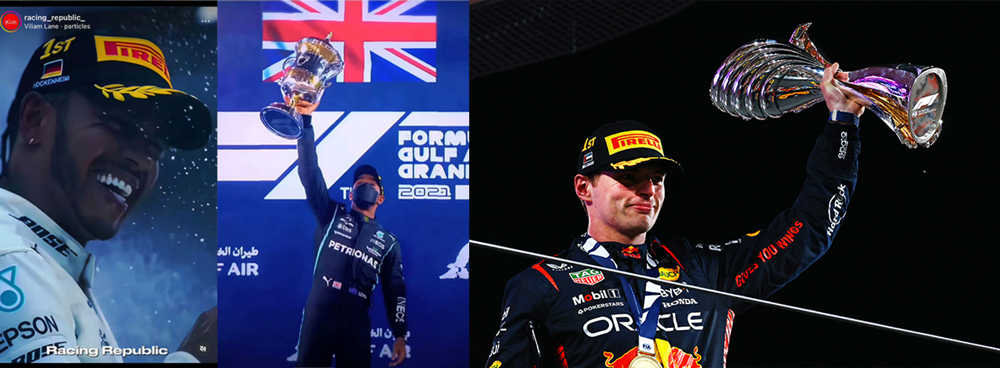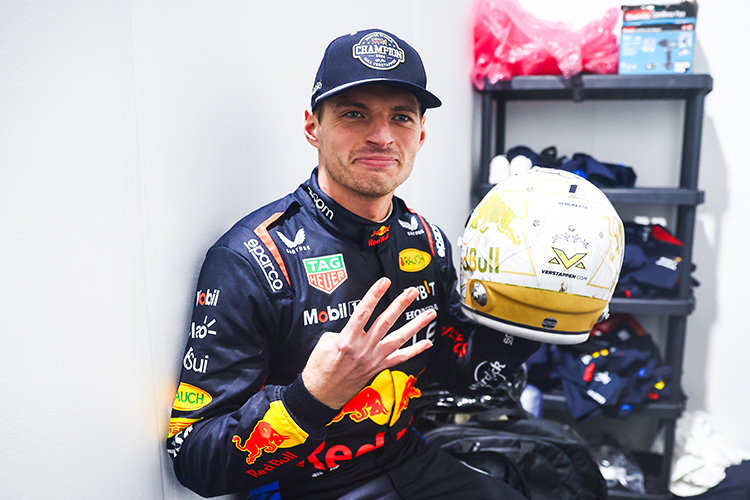How Hard Is It to Drive an F1 Car? Inside the Brutal Challenge Behind the Wheel
How Hard Is It to Drive an F1 Car? Inside the Brutal Challenge Behind the Wheel
If you’ve ever watched an onboard lap and thought, “That doesn’t look too bad,” you’ve just been duped by the smoothest illusion in sport. Formula 1 drivers make the ridiculous look routine. Driving an F1 car isn’t just hard—it’s a physical and mental fistfight at 300 km/h that demands elite fitness, split‑second judgment, and otherworldly precision.
Here’s what it really takes.
The Physics Punching You in the Face
- G-forces that don’t negotiate: In high-speed corners and heavy braking zones, drivers endure 4–6 g. That’s four to six times bodyweight forcing your head sideways or forward every few seconds, for up to two hours.
- Braking that feels inhuman: From 200 km/h to 0 can take roughly two seconds and as little as 30–40 meters. The brake pedal can require forces approaching 100–130 kgf. Miss your pressure trace by a whisker and you lock a wheel.
- Steering that fights back: Yes, there’s power steering—but it’s tuned for feel, not comfort. High-speed turns load the arms and shoulders relentlessly.
- Heat that cooks you: Cockpit temps can exceed 50°C. Drivers can lose 2–4 liters of fluid and burn well over 1,000 calories per race. Fatigue isn’t a late-race surprise—it’s a constant.
- Vision under siege: At 320 km/h you cover nearly 90 meters every second. A human reaction time of ~0.2 s equals 18 meters traveled. You don’t react—you predict.
The Car Isn’t Driving You. You’re Managing a Jet Fighter with Wheels
The modern steering wheel isn’t a wheel; it’s mission control. On a single lap drivers may:
- Adjust brake bias corner-to-corner.
- Tweak differential on entry/mid/exit.
- Manage energy harvesting and deployment modes.
- Prep and open DRS, coordinate with battery state-of-charge.
- Monitor tire temps and pressures.
- Talk strategy on the radio while hitting apexes within centimeters.
Add 50–70 gear changes per lap, brake-by-wire feel, brake migration maps, clutch bite-point finesse, and out-lap prep—and that’s before you factor in racing someone for position.
The Technique: Downforce Demands Commitment
- You must go fast to go fast: Downforce grows with speed. The car feels skittish at low speeds but transforms into a limpet as airflow builds. The courage is in turning in earlier and faster than your instincts allow.
- Braking artistry: It’s not stomp-then-release. It’s a precise pressure curve—peak, modulate, trail—while rotating the car and keeping tire temps perfect.
- Traction is a negotiation: Throttle isn’t an on/off switch. It’s feathered to balance slip, protect the rears, and avoid traction control’s absence (because there isn’t any).
- Kerb use and micro-lines: A few centimeters can change balance, tire temp, and exit speed. Drivers “paint” the track, lap after lap, with millimetric consistency.
Qualifying vs. Racing: Two Different Sports
- Qualifying is violence in ballet shoes: One lap, one chance. Build tire temperature without overheating, charge the battery, manage traffic, nail the out-lap delta, then thread every apex at the limit.
- Racing is chess at 300 km/h: Save fuel. Save brakes. Cool the car. Protect the tires through multiple compounds and phases (warm-up, peak, fade). Set up an undercut, anticipate safety cars, adapt to wind shifts and track evolution—all while fighting in dirty air.
Weather, Wind, and the Wild Cards
- Wet or mixed conditions: Visibility can vanish behind spray, aquaplaning waits off-line, and tire choice can win or lose a race within a lap.
- Street circuits: Bumps, blind entries, and walls that punish millimeters. No runoff, no rehearsal.
- Wind sensitivity: A small gust can change downforce balance and brake points. Drivers recalibrate corner by corner.
By the Numbers
- Top speed: 320–350 km/h
- Cornering load: 4–6 g lateral
- Braking load: Up to ~5–6 g; ~30–40 m from 200 km/h to 0
- Brake pedal force: Up to ~100–130 kgf
- Race duration: ~305 km, up to 2 hours
- Heart rate: Often 160–190 bpm, sustained
- Cockpit temp: 50°C+
- Gear changes: Up to ~3,000 per race
- Fluid loss: 2–4 liters
Starts, Pit Stops, and the Precision Game
- Race start: No launch control. Drivers balance twin clutch paddles to hit the bite point perfectly, modulate torque, and manage wheelspin—while dodging rivals and finding a braking point into Turn 1 through chaos.
- Pit stops: Hit the limiter, stop on a coin, nail a perfect release. The car arrives, is serviced, and leaves in around two seconds. Any hesitation costs track position.
- Restarts: Tyres cool behind safety cars. Brakes glaze. Grip disappears. The first braking zone feels like stepping off a cliff—and you still have to pass someone.
Why “Just Try One” Doesn’t Work
Put a normal driver in an F1 car and three things likely happen:
- They stall, because the clutch bite is razor-thin and the launch is manual.
- They can’t warm the tires, so the car slides at slow speeds and won’t turn as expected.
- They can’t brake hard enough, long enough, consistently enough—so braking zones are missed and confidence evaporates.
Even elite drivers from other series need time to acclimatize. The performance envelope is unlike anything else with fenders.
The Mental Furnace
- Anticipation beats reaction: Drivers build a corner in their heads long before they see it—wind, grip, battery state, tire surface, traffic.
- Cognitive load: They’re executing a plan, triaging new data, and updating strategy every lap—all while driving on the limit and talking on the radio.
- Emotional control: One lock-up can cost a tire set. One rash move can cost a race. They balance aggression with restraint in milliseconds.
Preparation: Built Over Decades, Maintained Daily
- Physical training: Neck harness work for g-loads, forearms for steering, core for stability, cardio for heat and endurance, and heat acclimation sessions.
- Simulator time: Car setup work, brake traces, energy deployment plans, tire warm-up routines, and full-race run-throughs with virtual safety cars and weather.
- Data obsession: Drivers study overlays of throttle, brake, steering, speeds, and split times to find a tenth here, a tenth there—then reproduce it.
Why They Make It Look Easy
Muscle memory layered over obsessive preparation. An F1 lap is the product of thousands of micro‑decisions, trained reflexes, and practiced routines. The drivers’ calm is earned, not inherent—they’re operating where terror becomes technique.
So… How Hard Is It?
It’s the hardest driving job in the world. Not because turning a steering wheel is inherently complex, but because doing it at F1 speeds, under F1 loads, with F1 precision, and F1 consequences, stretches the limits of body and mind.
F1 is the sport where commitment is a performance tool. To unlock the car, you must trust it at a speed that feels impossible. And then you must do it again, and again, with millimeter accuracy, for nearly two hours—while managing a hybrid power unit, tires on a knife-edge, and 19 other people trying to make your life miserable.
That’s the brutal, beautiful truth behind the wheel.
FAQ
Understanding the Demands of Driving an F1 Car
Do F1 drivers have to stay fit?
Absolutely. Drivers endure 4–6 g in corners and under braking, 50°C+ cockpit heat, heart rates of 160–190 bpm, and races lasting up to two hours. Without elite fitness—especially neck, core, forearms, and cardiovascular endurance—they’d fade, make mistakes, and lose pace.
How do F1 drivers stay fit for the demands of racing?
- Cardiovascular: Interval cycling/running/rowing for sustained high heart rates and heat tolerance.
- Strength: Neck harness/isometrics, core/rotational stability, forearm and grip strength, posterior-chain work.
- Mobility: Hips, thoracic spine, shoulders for cockpit posture and steering range.
- Neuro: Reaction drills, hand–eye coordination, vision training, and decision-making under fatigue.
- Heat acclimation: Sauna, hot-weather runs, and hydration protocols.
Are F1 drivers the fittest?
They’re among the fittest athletes—but fitness is sport-specific. F1 demands unique neck strength, heat resilience, fine-motor control, and cognitive endurance. They’re not bodybuilders or marathoners, but for their job, their fitness is world-class.
Do F1 drivers swim?
Many do. Swimming builds aerobic capacity with low impact, improves shoulder endurance and mobility, aids breath control, and doubles as active recovery—ideal during dense travel schedules.
How do F1 drivers warm up?
- Dynamic mobility (neck, shoulders, hips, T-spine) and band activation.
- Light cardio to raise core temperature and heart rate.
- Neck pre‑fatigue and forearm/grip activation.
- Reaction drills and vision priming.
- Hydration with electrolytes and breathing routines to steady arousal levels.
How do F1 drivers prepare physically for a season?
Off-season blocks build an endurance base, targeted strength (especially neck/core), and heat tolerance. In-season focuses on maintenance: shorter high-intensity sessions, mobility, recovery (sleep, massage, physio), jet-lag management, and nutrition strategies synced to race weeks and climates.
Is driving an F1 car easy?
No. Launching without stalling is tricky, brake pedals can require up to ~120 kg of force, and the car only “works” when tires and brakes are in a narrow temperature window. Downforce demands commitment at speed; without it, the car feels nervous and unforgiving.
Why are F1 cars hard to drive?
- Downforce dependence: The car grips more the faster you go—counterintuitive and intimidating.
- Brutal braking and g‑loads: Precision pressure traces or you lock up.
- Complex systems: Brake-by-wire, hybrid energy harvesting/deployment, differential and brake bias tweaks.
- Tires: Small operating window; you must manage temps every lap.
- Heat and visibility constraints inside the cockpit.
Why are F1 cars hard to drive for the average person?
Most can’t generate enough brake force, keep tires/brakes in range, or tolerate sustained g‑forces and cockpit heat. The cognitive load—gears, modes, radio, traffic, and millimetric lines at 300+ km/h—is overwhelming without years of training.
How hard is F1 physically?
Drivers face 4–6 g laterally and ~5–6 g under braking, lose 2–4 liters of fluid per race, and burn 1,000+ calories. Neck and core are taxed every corner; forearms and shoulders battle heavy steering; heat stress and vibration add constant fatigue.
Is F1 hard on the body?
Yes. Common issues include neck/back strain, forearm tightness, overuse injuries, and dehydration-related fatigue. Travel adds sleep disruption and immune stress. Robust recovery protocols (physio, mobility, hydration, nutrition, sleep) are essential.
Is F1 harder than any other sport?
“Harder” is context-dependent. F1 uniquely combines extreme g‑forces, heat, speed, and cognitive load for up to two hours. It’s among the most physiologically and mentally demanding sports—but direct comparisons across disciplines aren’t definitive.
Is F1 harder than boxing?
They stress the body differently. Boxing has acute impact and concussion risk with intermittent high-intensity bursts. F1 emphasizes sustained g‑loads, heat stress, and precision decision-making at speed. Both require elite conditioning and resilience.
What’s harder: F1 or UFC?
Different systems, different risks. UFC involves grappling strength, explosive power, and impact tolerance. F1 demands fine-motor control under g‑load, endurance in heat, and continuous high-speed cognition. Each is exceptionally hard in its own way.
Why does F1 require exceptional talent and training?
Drivers start young in karting to develop car control, spatial awareness, and racecraft. At the top level, they blend sensory acuity, predictive decision-making, technical feedback, and data analysis with elite fitness—then reproduce it under pressure.
Gravity and g‑forces: understanding the strain of being an F1 driver
At 5 g lateral, a 7 kg head/helmet effectively “weighs” ~35 kg, straining the neck every corner. Under heavy braking, blood shifts forward, vision can blur, and micro-corrections must continue. Training builds tolerance, but the forces never get “easy”—drivers get stronger and smarter at managing them.
Up Next



